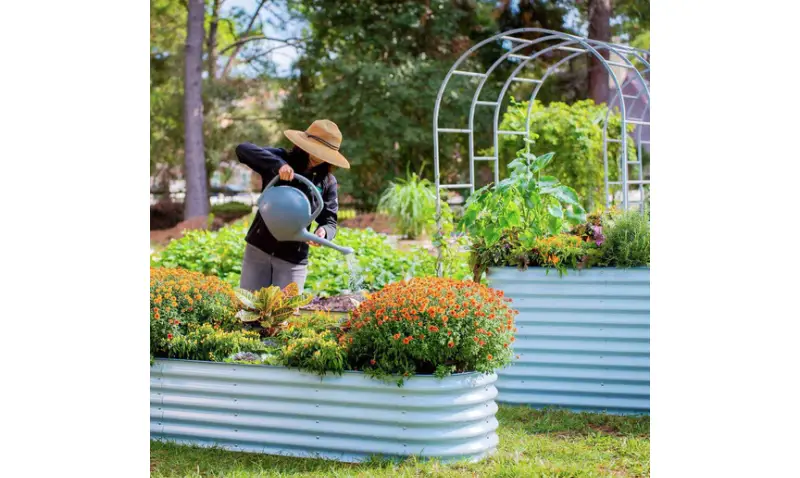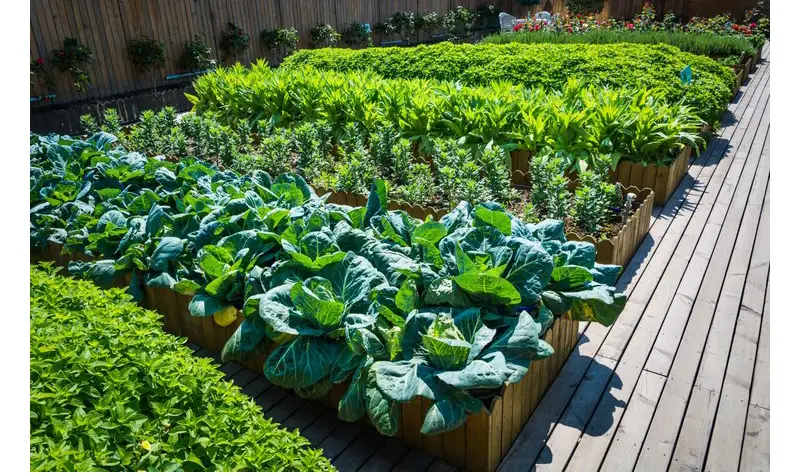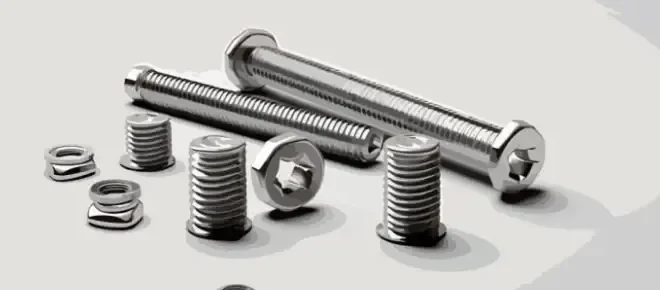
Galvanized Raised Bed Planter: A Gardener’s Guide To Elevated Growing
In the realm of gardening, the choice of planter can significantly impact plant health and growth. Galvanized raised bed planters have emerged as a popular choice among gardening enthusiasts due to their durability, versatility, and aesthetic appeal. In this comprehensive guide, we delve into the world of galvanized raised bed planters, exploring their benefits, considerations for selection, installation tips, and maintenance guidelines. Whether you’re a novice gardener or a seasoned horticulturist, this guide aims to equip you with the knowledge needed to harness the potential of galvanized raised bed planters for bountiful and flourishing gardens.
Understanding Galvanized Raised Bed Planters
Galvanized raised bed planters have become a popular choice among gardeners due to their durability and practicality. These planters are typically made of galvanized steel, which is coated with zinc to prevent rusting and corrosion, ensuring longevity even in harsh weather conditions. Their raised design offers several advantages, including improved drainage, better soil aeration, and easier access for planting, watering, and harvesting. Additionally, galvanized raised bed planters provide a clean and sleek aesthetic that complements various garden styles, from modern to rustic.

Benefits Of Galvanized Raised Bed Planters
- Enhanced Drainage: The raised design promotes superior drainage, preventing waterlogging and ensuring optimal moisture levels for plant roots.
- Improved Soil Warmth: Elevated beds absorb and retain heat more efficiently, creating a warmer environment that extends the growing season and fosters healthy root development.
- Reduced Weeding: Raised beds offer a contained growing space, minimizing weed intrusion and facilitating easier weed management.
- Accessibility: The elevated height of galvanized raised bed planters reduces the need for bending and stooping, making gardening tasks more accessible and comfortable for individuals with mobility issues.
- Aesthetic Appeal: The sleek and modern appearance of galvanized steel adds a stylish touch to any garden or outdoor space, complementing various architectural styles and garden designs.
Selecting The Right Galvanized Raised Bed Planter
Size And Dimensions
When choosing a galvanized raised bed planter, consider the available space in your garden and the specific plants you intend to grow. Opt for dimensions that accommodate your gardening goals while ensuring adequate spacing for plant growth and maintenance.
Material Quality
Invest in galvanized raised bed planters crafted from high-quality steel with a thick galvanized coating. Superior craftsmanship ensures durability and longevity, allowing your planter to withstand the rigors of outdoor exposure and frequent gardening activities.
Design And Configuration
Select a design that aligns with your aesthetic preferences and gardening requirements. Galvanized raised bed planters are available in various shapes, including rectangular, square, and circular, allowing you to customize your garden layout and optimize space utilization.
Installing Galvanized Raised Bed Planters
Site Preparation
Before installation, assess the chosen location for proper sunlight exposure, soil quality, and drainage conditions. Clear any debris or vegetation and level the ground surface to ensure stability and uniformity.
Assembly And Placement
Follow the manufacturer’s instructions for assembling your galvanized raised bed planter, ensuring secure fastening and structural integrity. Position the planter in its designated location, taking care to align it properly and provide adequate clearance for access and maintenance.
Soil Filling And Amendment
Fill the raised bed with a high-quality gardening soil mix enriched with compost, organic matter, and essential nutrients. Incorporate soil amendments as needed to optimize fertility, pH levels, and drainage characteristics based on the specific requirements of your chosen plants.
Maintaining Galvanized Raised Bed Planters
Watering And Irrigation
Monitor soil moisture levels regularly and water your plants as needed to maintain optimal hydration. Consider installing a drip irrigation system or soaker hose to ensure efficient water distribution and minimize moisture loss through evaporation.
Weed Control
Prevent weed growth by applying mulch or landscape fabric to the surface of the soil within your galvanized raised bed planter. Regularly inspect the bed for emerging weeds and promptly remove them to prevent competition for nutrients and space.
Pest And Disease Management
Monitor your plants for signs of pests or diseases and take appropriate measures to address infestations or outbreaks promptly. Implement integrated pest management strategies, such as biological controls, cultural practices, and targeted treatments, to minimize damage and preserve plant health.
Seasonal Maintenance
Perform routine maintenance tasks throughout the year to keep your galvanized raised bed planter in optimal condition. This includes removing debris, inspecting for signs of wear or damage, and refreshing soil and amendments as needed to support plant growth and vitality.
Conclusion
Galvanized raised bed planters offer a myriad of advantages for gardening enthusiasts seeking to cultivate thriving and productive gardens. From enhanced drainage and soil warmth to reduced weeding and accessibility, these elevated containers provide a versatile and stylish solution for gardeners of all skill levels. By selecting the right planter, installing it correctly, and implementing proper maintenance practices, you can harness the full potential of galvanized raised bed planters to create a flourishing oasis of greenery and beauty in your outdoor space.
Resource Link:
https://en.wikipedia.org/wiki/Raised-bed_gardening
https://vegogarden.com/products/9-in-1-modular-raised-garden-bed



